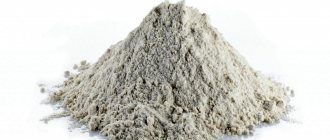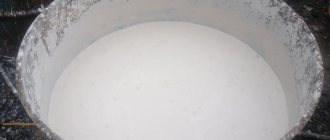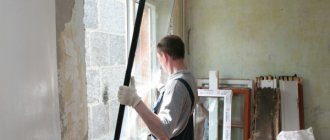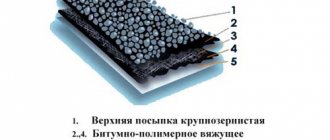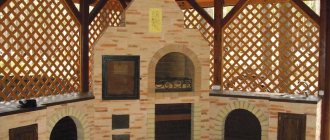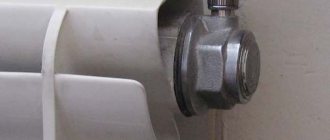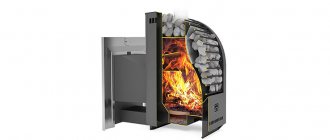Why do you need whitewashing for trees?
Coating the bottom of the barrel with a protective white layer is used for the following purposes:
- Protection in cold weather from adverse weather conditions and changes in night and day temperatures. In whitened trunks, icing of the bark, leading to the appearance of microcracks, occurs much less frequently.
- The lime component in the whitewash solution prevents pathogens from penetrating into the bark and repels garden pests.
- White color reflects light well and serves as protection against sunburn, including in winter, when the ultraviolet effects of sunlight can be quite aggressive. Overheating of the bark, as well as its icing, often leads to the appearance of microcracks and further destructive corrosion.
- Decorative function, neat well-groomed appearance.
Related article:
Winter crops
Whitewashing: aesthetics and disinfection
Mortar
High-quality lime whitewash is an excellent material for painting indoor walls and ceilings. At the same time, whitewashing the ceiling with prepared lime is also the simplest method of high-quality disinfection of surfaces.
Walls in residential buildings are often treated with lime compounds - in particular, in the kitchen and bathrooms. It should be noted that this material is especially resistant to temperature factors, as well as constant high humidity.
Before you begin whitewashing walls and ceilings with lime, be sure to thoroughly prepare the base surface. Accumulated dust, insufficiently strong old plaster and other exfoliated materials are removed, existing cracks are puttied, and then the walls are well treated with a primer.
The base prepared for whitewashing with lime must be clean. Before starting to apply the lime layer, the walls and ceilings must be wetted with water.
Disadvantages of whitewashing trunks
Meanwhile, there is an opinion that whitewashing garden or street trees is not only useless, but in some cases even harmful. Having considered the disadvantages of this procedure listed below, let everyone decide for themselves whether it is worth whitewashing the trees in their garden plot or local area.
- Covering the bark reduces its breathability and, as a result, the necessary gas exchange rates. As is known, nutrition of plant tissue occurs not only through the root system and lighting, but also as a result of air exchange processes. In addition, clogged bark pores slow down the movement of sap from the roots to the crown, which gradually weakens the plant and leads to its premature aging.
- Very often, the composition includes an adhesive component, which further worsens the air exchange properties of the bark.
- Whitewashing changes the acidity of the wood surface, which is why it can gradually loosen, losing its stability characteristics.
Read the article about how to whitewash trees.
When making a final decision on the advisability of whitewashing, you should take into account that frost and sunburn can harm the delicate bark much more than lime or any other whitewash.
Related article:
A few secrets for placing plants in the garden
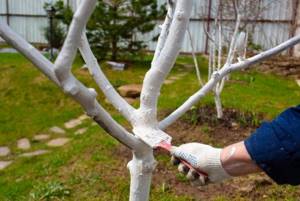
Recipe 1: lime dough, salt and water
Whitewashing the ceiling
You will need three kilograms of lime dough, one hundred grams of table salt, ten liters of water. Dilute slaked lime in half the total volume of liquid. Add a salt solution to the lime milk (table salt is diluted in a liter of hot water). Mix the resulting composition thoroughly.
Separately, soak the required tint pigments or ultramarine in water. Gradually add the diluted coloring pigment into the lime mixture until the desired shade is obtained.
And finally, to finish, add the remaining five liters of water to the solution, mix thoroughly and gently, and then strain through a fine sieve to get rid of impurities and small lumps. By the way, you can replace table salt with another crystallizing component - aluminum alum; about two hundred grams of it will be required for ten liters.
Which trees should not be whitewashed?
You definitely shouldn’t do this with trees growing in full shade, i.e. in park or forest areas. There is no point in doing this at the end of spring or summer, but only at the end of autumn, before the snow falls, or in early spring, when it has just melted.
Young trees must be whitened with great care, given the tenderness and vulnerability of their woody structures. Experienced gardeners offer two ways to solve the problem - use a less concentrated solution for young plantings (dilute lime in a smaller proportion) or use water-based or acrylic paint instead.
Lime consumption and proportions
The slaked mixture is diluted in proportions of 1 to 3. Take 1 kilogram of powder or batter for 3 liters of water. The solution mixed in this way allows you to get approximately 8 kilograms of whitewash. This amount is enough to cover an area of 12 square meters.
There is an alternative way to calculate the original proportion. It depends on the quadrature. The wall is calmed down, divided into “sections” of 2.5 square meters, for each of which 750 ml of water and 500 grams of lime are taken.
Lime consumption depends on the material from which the surface is made. If brickwork is whitewashed, then a similar volume of solution will be enough for no more than 10 square meters. How much material will be spent depends on the quality of surface preparation, as well as the tools used to apply whitewash.
Do not use a roller for application. It is recommended to apply the solution with a special brush. When whitewashing is carried out on a brick surface, the bristles of the tool should be natural. The spray gun allows you to achieve maximum savings on the mixture. It is more convenient to use hand-held devices with a long hose rather than electric ones.
Lime selection
It is known that this rock can be used in slaked or unslaked form. Each of them has its own priority purpose. Quicklime, undiluted lime is in demand in construction, in particular for plastering work, the production of slag concrete, all kinds of coloring compositions, and sand-lime bricks. If you dilute it with water, you get slaked lime, which is used in agriculture to whitewash trees or added to the soil to reduce its acidity.
Related article:
How to choose a watering method for your garden
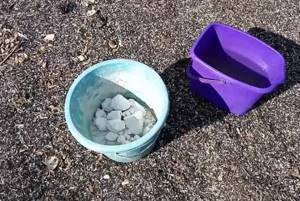
In total, three main compositions on this basis are most often used in gardening:
- fluff;
- lime dough;
- lime milk.
Where is lime whitening used?
The antiseptic properties of the material made it most popular for use in kindergartens and medical institutions, and its strength - in public buildings with high traffic. The moisture resistance of lime allows the mixture to be used for finishing walls in swimming pools, baths, and showers. Low cost makes lime a profitable solution for areas such as garages, closets, basements and so on.
Whitewashing remains relevant not only for public places. It is actively used to carry out inexpensive cosmetic repairs in office premises, commercial facilities, city apartments, private houses and country houses. It is used wherever inexpensive and high-quality wall decoration is needed.
How to dilute lime
Natural quicklime material consists of pieces of rock or its powder. The quenching procedure proceeds in the form of a violent reaction with water and is accompanied by the release of a large amount of heat. Maintaining the correct proportions of lime and water is necessary not only to obtain a high-quality composition, but also for safety reasons, so as not to get burned.
To do this, take a clean, capacious container (bucket, tank, etc.), pour quicklime mineral into it, and then add water. To obtain the so-called fluff, used to reduce the acidity of the soil and whitewash, a 1:1 proportion is maintained. The resulting mixture begins to hiss, its temperature rises, and splashes fly—this is the process of quenching or “boiling.” It can last from an hour or more, depending on the conditions and fractions of the mineral. At this time, you do not need to touch anything or otherwise participate in the process. After the hissing stops, the solution should be carefully mixed with a wooden stick.
Related article:
8 fragrant plants for the garden
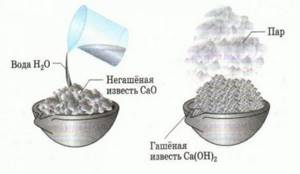
Dilution of lime with water is accompanied by a strong thermal reaction, the temperature of which can reach +150...+200C. You should protect your eyes from splashes with goggles and wear protective gloves!
To prepare the so-called “dough”, different proportions are taken: for 1 part of quicklime mineral - 1-1.5 parts of water. By increasing the amount of water to 3 parts, lime milk is obtained.
Tips for working with lime
Lime is applied in a variety of ways. These can be rollers, brushes, or a spray device. The latter is especially effective if you need to cover a large surface. When working with the latter, you need to take care to protect your body and face, as you can get burns.
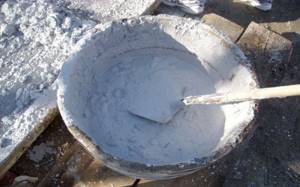
Before applying lime, the surface must be completely cleaned of old whitewash, grease, efflorescence, dirt and rust. If necessary, the surface is plastered and primed, cracks and irregularities are covered, and everything that should not be treated, for example, radiators, is covered.
Lime is usually applied in several layers. Moreover, it is much better to apply the next layer if the previous one has not yet completely dried - after one and a half to two hours. This will give you better grip. It is recommended to wet the surface itself before applying the first layer.
What water to dilute lime with?
To do this, use regular cold, or preferably ice, water. In some cases, additional components are introduced into it, among which the following can be used (the quantity is indicated per 10-liter bucket):
- flour-based paste - 5-7 tablespoons;
- glue (the method will be discussed below)
- clay - 1 kg of solid product;
- soap shavings from laundry or green soap - about 10 tablespoons;
- organic matter, in particular fresh manure, no more than 1 kg;
- milk - as a water substitute when preparing paste, maintaining the same proportions;
- carbolic acid (rodent protection) - 1 tablespoon;
- copper sulfate - 300g. Its use increases the protective characteristics against mold and fungal infections.
If there is any doubt about the proportions, you should achieve the consistency of moderately liquid sour cream.
Whitewashing should be done a couple of hours after receiving the prepared diluted liquid lime.
Related article:
High beds on the site - minimum digging
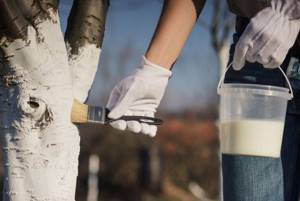
How to increase the durability of the resulting whitewash?
To ensure that the whitewash not only adheres well to the walls, but also does not crumble for a long time, soap or wallpaper glue is introduced into the solution. Lime is also used for exterior wall finishing. Facades are exposed to the harmful effects of atmospheric precipitation, so it is necessary to increase the durability of the composition, which can be achieved by drying oil, which prevents the whitewash from quickly being washed off, repelling moisture. Another disadvantage of lime that worries many is the ability to stain anything that touches the whitewashed surface. To eliminate this disadvantage, ordinary table salt is added to the solution. Its quantity is 1 kg per 10 liters. The amount of drying oil is about 100 ml per bucket of ready-to-use whitewash. Laundry soap must be passed through a grater and then poured with hot water to obtain a solution, which is poured in during the preparation of the mixture. If you don’t have wallpaper or PVA glue, you can use carpenter’s glue. It should be pre-cooked in a steam bath. A similar hot admixture is added before the actual whitewashing, that is, into the already prepared lime whitewash.
Using lime dough
In this case, the composition is not made liquid, ready for use, but dough-like. For a standard 10-liter bucket, take 3 kg of quicklime and fill it with 4 liters of cold water. The preparation time for the “dough” is about a day. After this, it is diluted in the required consistency with water and used for its intended purpose.
Related article:
Main characteristics of a modern brush cutter
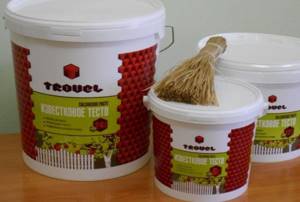
What should a high-quality whitewash be like?
You can check the resulting composition with a wooden spatula. A thick white film should remain on the instrument. This mixture is diluted with cold water, if necessary, so that the solution is homogeneous and opaque. From a kilogram of potassium oxide after slaking and diluting with cold water, approximately 10 liters of whitewash are obtained.
Be sure to check that there are no lumps in the lime. To ensure that there are no remaining small particles that did not dissolve during the slaking process, you should pass the whitewash through a mesh. You should also take into account what tool is supposed to be used to apply the composition. If you decide to use a spray gun, then the solution is passed through gauze. Otherwise, it will not be possible to carry out high-quality whitewashing.
How to remove lime from floors and walls
During the process of whitewashing surfaces with lime, stains inevitably remain on all surfaces. The easiest way to remove them is while they are still fresh; this will require water and a sponge; treatment with water is carried out several times, this allows you to remove all the white stains.
If a layer of old lime needs to be removed to apply other materials during repairs, then the following points must be adhered to:
- Wet all desired surfaces with water using a brush or spray gun.
- Wait until thoroughly wet, then remove the lime with a hard, metal sponge or scraper. If there are several layers of lime, you will have to wet it several times and also use paper clips several times.
- If you are not afraid of dust in the room, then the process can be speeded up by using an angle grinder with a special attachment.
- It is imperative to use goggles and a respirator, since dust during work can negatively affect the eyes and the condition of the respiratory tract.
The removal of old lime can be facilitated by the use of special liquid products, under the influence of which the whitewash layer dissolves and easily comes off from surfaces.
- Guard Industry product
- Decap' Sols Plus Guard.
- Tool Space.
Instructions for preparing the solution
The building materials store sells dry lime powder - fluff.
Its price is slightly higher than quicklime. Pushonka is dry slaked lime. The package is enough to treat walls in a room with an area of 12-15 sq.m.
The solution adheres well to smooth concrete walls, and the material consumption is less. Brickwork absorbs more liquid and has an uneven surface, which increases consumption. If whitewashing is done in 2-3 layers, then more solution will be required. In any case, you should take extra powder.
Prepare the solution:
- 1 sq.m will require 500 ml of solution;
- For 1 kg of dry powder you need to take 3 liters of water;
- The paste should be diluted in the ratio of 1 kg of dough per 3 liters of water.
